by Julie Pigott Dillard | Aug 31, 2018
With so many extracurriculars available these days, parents and kids are overwhelmed with choices.
To choose the right one, know what to prioritize, says Heather Kent, associate director of the Florida 4-H youth development program, part of University of Florida’s Institute of Food and Agricultural Sciences Extension.
“The 4-H motto is ‘To make the best better.’ The research shows that kids are more likely to find success as adults when they feel confident and capable in the face of new challenges,” Kent said. “You want to find a program where kids can find their spark in a safe environment.”
So, when comparing extracurricular programs, keep this checklist in mind, Kent said.
- Does it help them do better in school?
Look for programs that complement a child’s day-to-day school work. “Each 4-H activity has an educational component to it,” Kent said. “Compared to their non-4-H peers, 4-H youth report better grades, higher levels of academic competence and an elevated level of engagement at school.”
- Does it teach them how to speak up?
Give your child a chance to express him or herself to others. “4-H alumni often say that the public speaking skills they learned in 4-H have helped them throughout their careers, no matter which field they are in,” Kent said.
- Does it include STEM?
“One of the goals of 4-H is prepare young people for the workforce, which means introducing them to STEM — science, technology, engineering and math — through hands-on projects in areas like horticulture, robotics and embryology,” Kent said.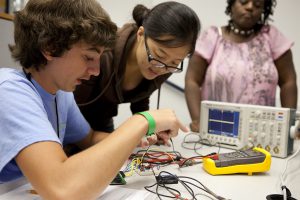
- Does it broaden their horizons?
“The members of a 4-H club may not all go to the same school or live in the same neighborhood. Meeting people who have different backgrounds from yourself expands your worldview,” Kent said.
- Is it a good return on investment?
Some programs give you more bang for your buck. “Annual registration for 4-H is $20, and there are scholarships available. That gives youth access to a wide variety of projects and events—everything from aerospace to agriculture. If not for their 4-H membership, they might have to join several other organizations to get all the same opportunities,” Kent said.
- Does it help them explore their interests?
“Finding a passion teaches youth about delaying gratification and taking pride in their work. That’s something they take with them into their careers,” Kent said.
- Does it develop organization skills?
Choose activities that require kids to stay on top of things and plan ahead. “For a project to be successful, 4-H members know they need to stay organized. For instance, you can’t raise a prize-winning animal without a plan for how you are going to reach that goal,” Kent said.
- Is it open to everyone?
Consider whether the whole family can participate. “4-H is open to both boys and girls ages 5 through 18. There is also collegiate 4-H and adult volunteering opportunities. Unlike other programs, 4-H is something everyone in the household can be a part of,” Kent said.
- Does it introduce kids to mentors?
Having adult role models who aren’t one’s parents is an important part of youth development, Kent said. “Our trained volunteers and Extension agents form a support system for 4-H members. Knowing that another adult cares about you is a big confidence boost and helps kids feel comfortable trying new things.”
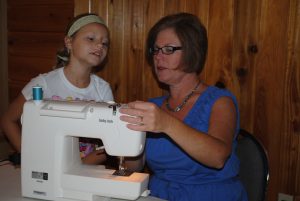
- Is it well established?
Learn about the history of the program. “4-H has been around for more than 100 years, and it’s been researched and developed through the U.S. Land Grant university system. In Florida, there are more than 200,000 youth in 4-H, and each of them benefits from being a part this longstanding, well known organization,” Kent said.
The mission of the University of Florida Institute of Food and Agricultural Sciences is to develop knowledge relevant to agricultural, human and natural resources and to make that knowledge available to sustain and enhance the quality of human life. With more than a dozen research facilities, 67 county Extension offices, and award-winning students and faculty in the UF College of Agricultural and Life Sciences, UF/IFAS works to bring science-based solutions to the state’s agricultural and natural resources industries, and all Florida residents. Visit the UF/IFAS web site at ifas.ufl.eduand follow us on social media at @UF_IFAS.
by Samantha Grenrock – Sam is a public relations specialist at UF/IFAS Communications. She loves animals, poetry and learning about science.
Shared with permission from the original author.
by Allison Leo | Aug 24, 2018
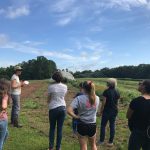 Cooking with Florida Produce
Cooking with Florida Produce
Knowing how to cook and being comfortable in the kitchen is an important life skill that has enduring benefits. Leon County 4-H hosted a culinary day camp with a unique twist: educating youth about Florida produce and local agriculture. In addition to teaching culinary techniques and nutrition, youth learned foundational cooking skills and took things a step further by building connections between local farms and their kitchens.
Teaming up with Fresh from Florida Kids
Chef Paula Kendrick co-led the camp. featuring Florida-grown produce. The importance of nutrition and incorporating healthy foods into the diet was an ongoing theme during the camp. Lessons on how to read food labels, the importance of whole grain and limiting sugar intake were also featured. A salsa cooking competition using local products ended the camp. Chef Paula is from Florida Department of Agriculture and Consumer Services – Fresh from Florida Kids.
Local Farm Highlighted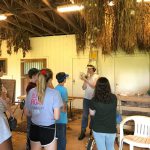
A visit to Full Earth Farm in Quincy helped youth see how a small local farm operates. Owners Katie Harris and Aaron Suko warmly welcomed the group to their farm and gave them a tour. Florida seasonality, composting benefits and how local farms provide fresh produce to businesses and homes in our area were tour highlights. The group left with a box of fresh summer squash to deliver to their next stop – Damfino’s Cafe and Market. Damfino’s sources local products for their menu items. Owner Lucy and Chef Max spoke to the group about their restaurant’s mission of connecting the local community to local farmers.
During the camp, youth were eager to try all the recipes and many of the campers tried new food items for the first time. Fresh herbs from the 4-H garden were used in a number of the recipes. Rosemary was added to honeydew sorbet, and basil was added to sautéed summer squash.
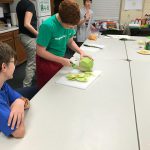 Healthy Eating is Best Learned in the Kitchen
Healthy Eating is Best Learned in the Kitchen
Chef Paula Kendrick shared, “The students got to visit a Florida farm, eat at a local Florida farm to table restaurant and learn how to handle and cook fresh Florida produce. I love helping them to make that farm to table connection while teaching them about Florida agriculture. Cooking is one of the best ways to actually get them to try new things and to understand the importance of healthy eating and nutrition.”
For more information on healthy living 4-H projects such as cooking, contact your local UF/IFAS County Extension Office.
by Yolanda Goode | Aug 10, 2018
I recently the privilege to attend a national training conducted by Washington State University called Navigating Differences. The goal of the program was to help people become culturally competent. No magic pill exists to make us instantly culturally competent. We have to be willing to engage in and grow through the process. According to a policy brief from the National Educator’s Association, “when applied to education, cultural competence centers on the skills and knowledge to effectively serve students from diverse cultures.”
Topic: Diversity
When most people hear or read the word diversity, they automatically think of the race and gender. Some may think of social economic status or religion. The Ohio State University Extension defines diversity as “the differences among people with respect to age, socio-economic status, ethnicity, gender, physical and mental ability, race, sexual orientation, spiritual practices, and other human differences” (https://hr.cfaes.ohio-state.edu/diversity/DR_Sec1_Guide06.pdf), which is also the same definition used by the Washington State Extension’s Navigating Differences curriculum.
The training challenged me in my thinking in many ways. One of my “aha” moments came when it was shared that there are more differences within a cultural group than between groups. Do you question this statement? If so, here is your first challenge: Look up the Diversity Wheel. What is a diversity wheel? It is the dimensions that make us, well, us. You will discover there are somethings that are core to you and permanent – located at the center of the wheel. All other dimensions, which develop over a lifetime, are found on the outer rings of the wheel.
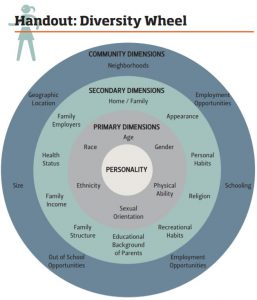
credit: Oregon State University
The next phase of your challenge is to look at your group (family, organization, or ethnic group) and examine factors including the following: age, gender, income, physical capacity, health status, beliefs, meal practices, size, height, educational background and hobbies.
These are just a few areas, but you will discover more after you look up a diversity wheel model.
Why should we examine diversity?
Working with people, whether in a personal or professional setting, is complex. The better your understanding of yourself and others is, the more productive your interactions will be. Remember, we are unique and come from different experiences that we bring that to the table with us.
For additional reading, visit the UF/IFAS Electronic Data Information Source:
Here are links to a few other Diversity Wheel models:
http://web.jhu.edu/dlc/resources/diversity_wheel/index.html
https://www.ncu.edu/about-ncu/diversity/diversity-wheel#gref






